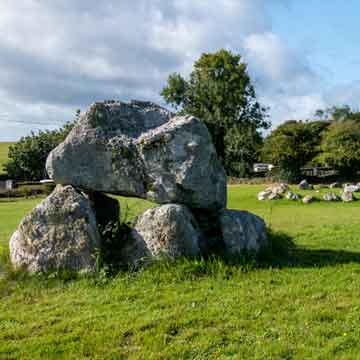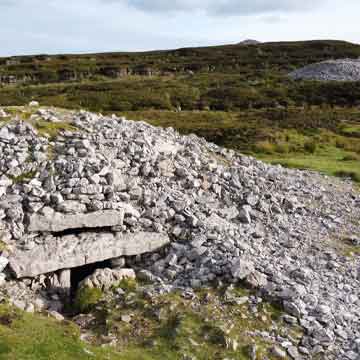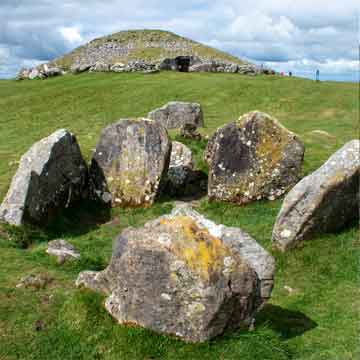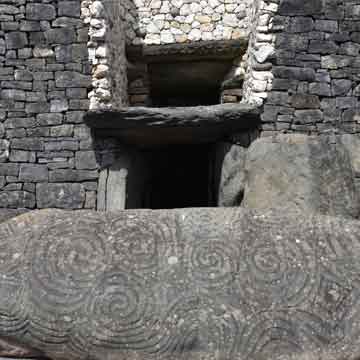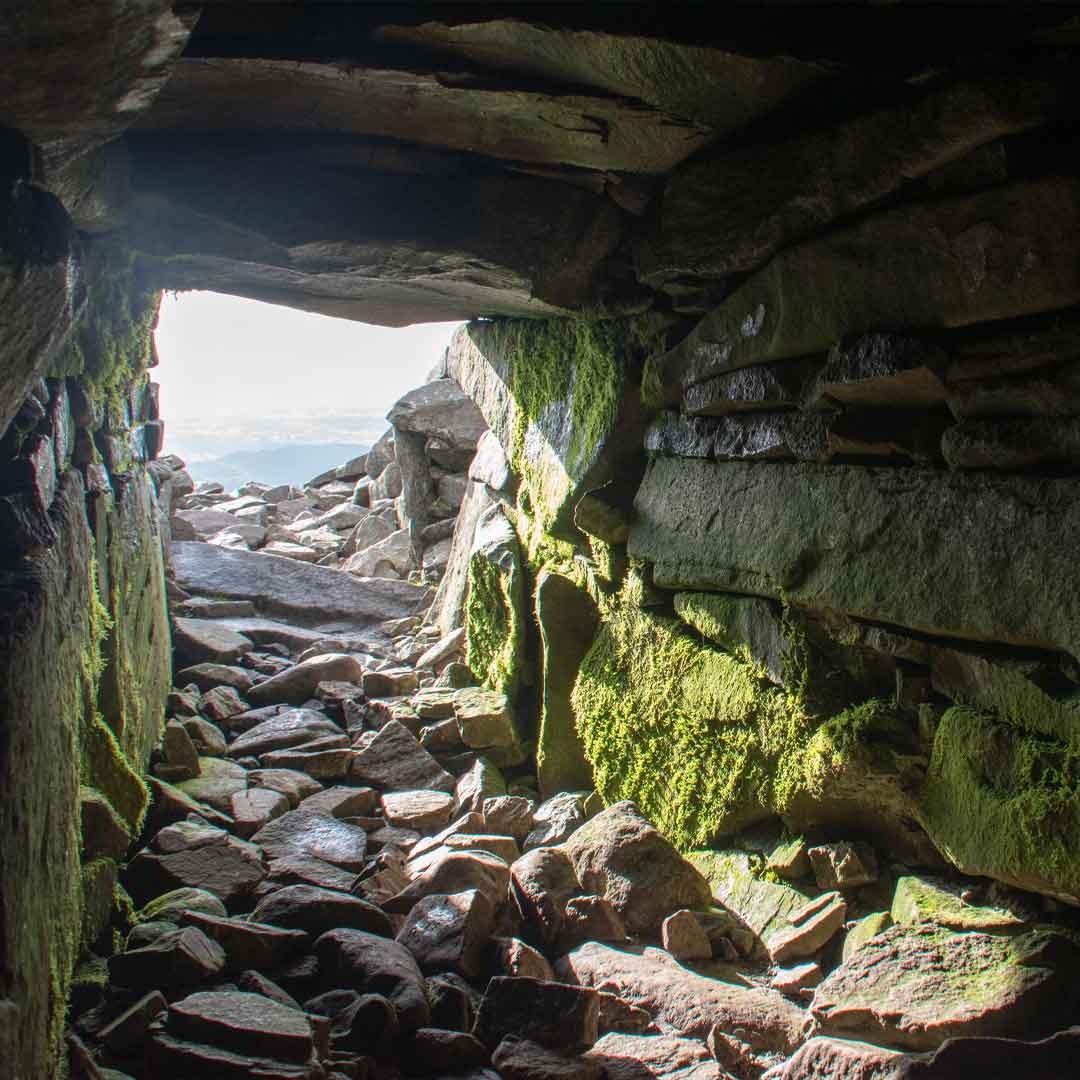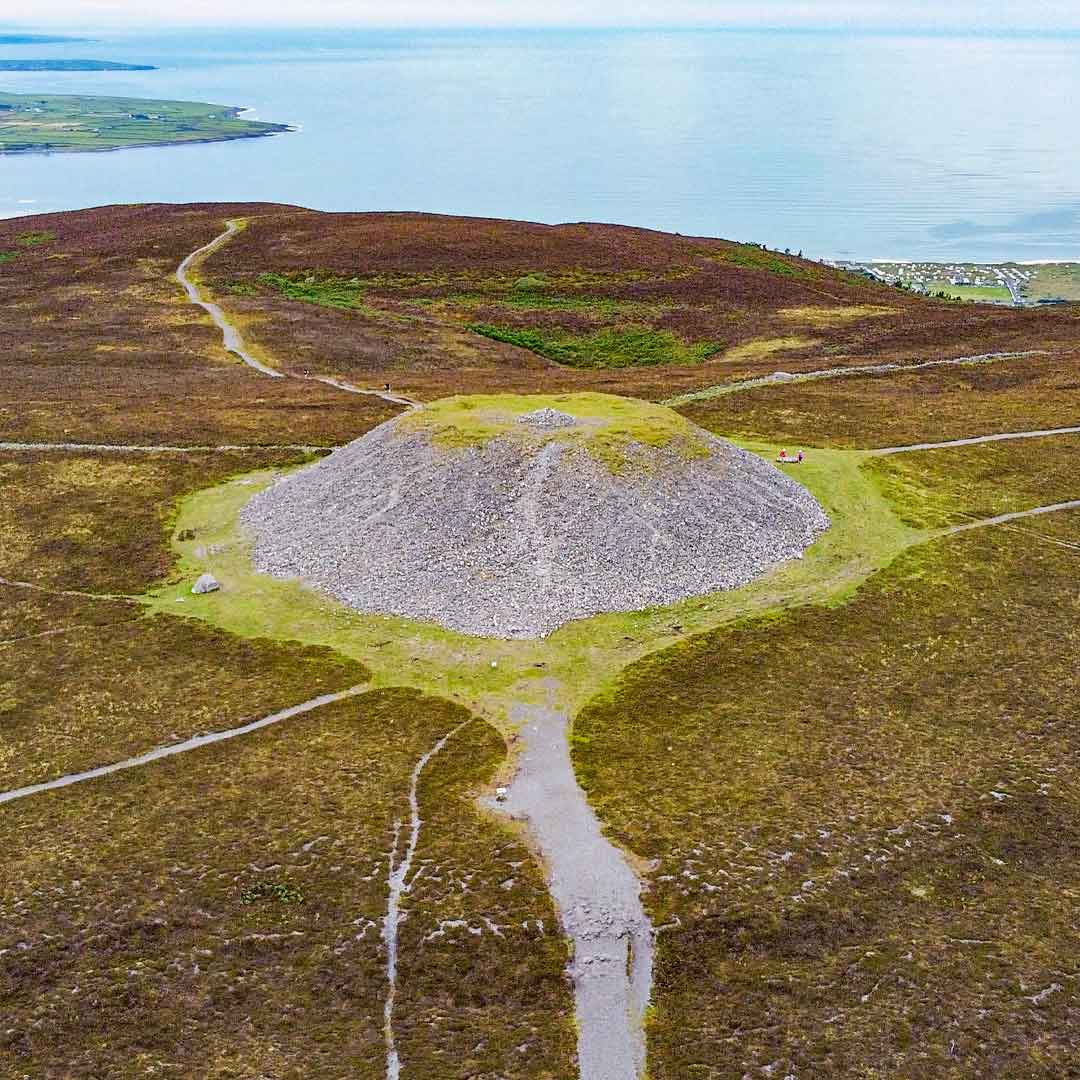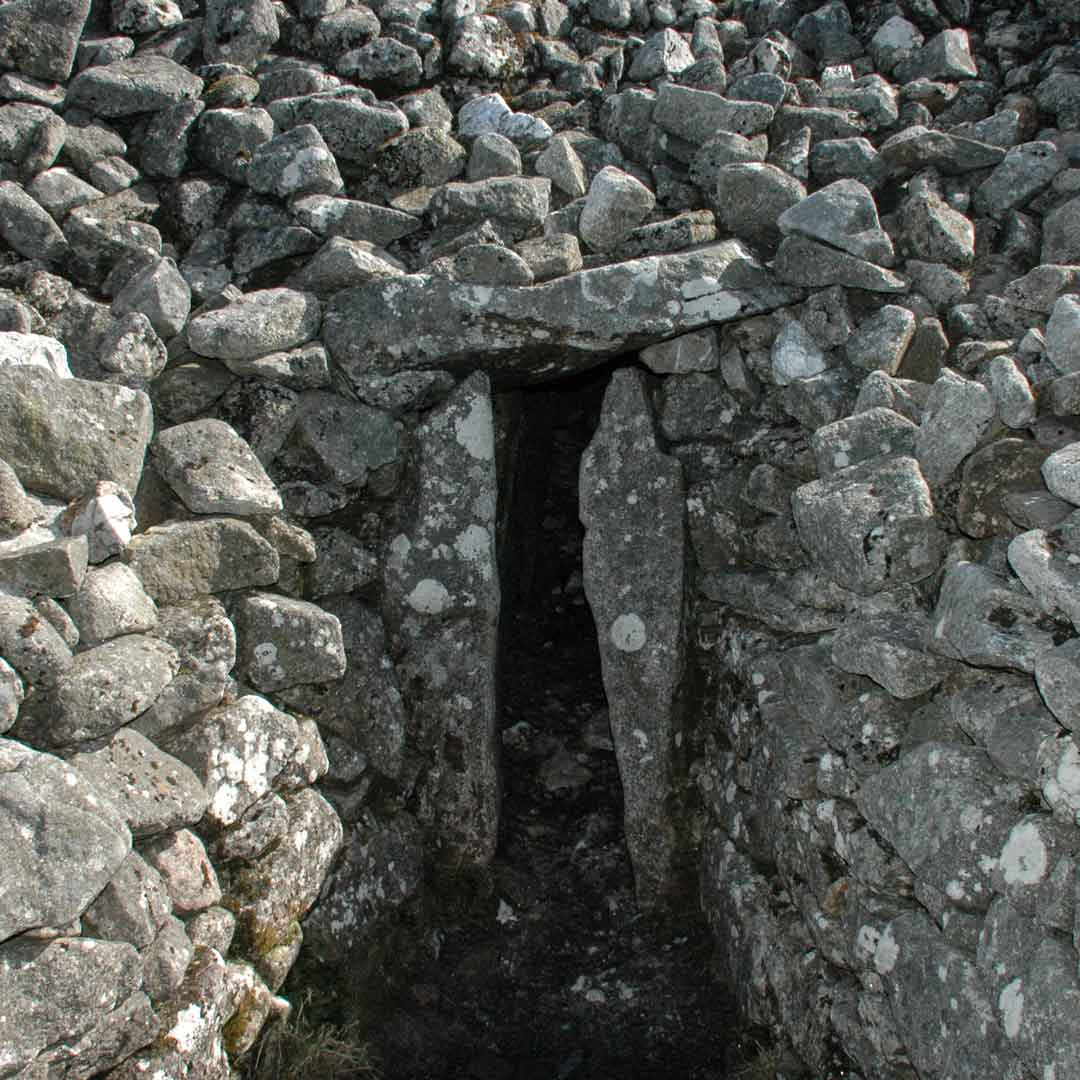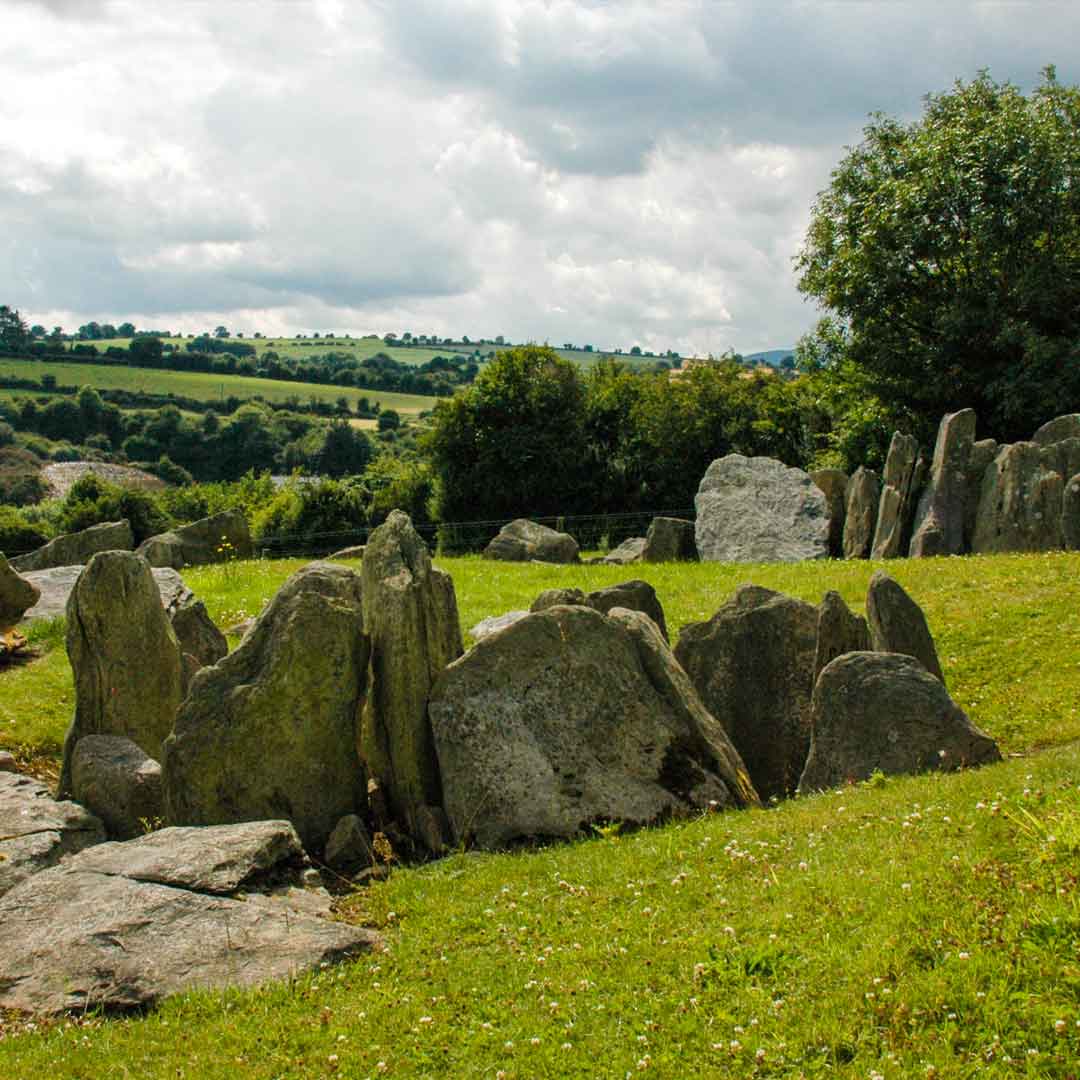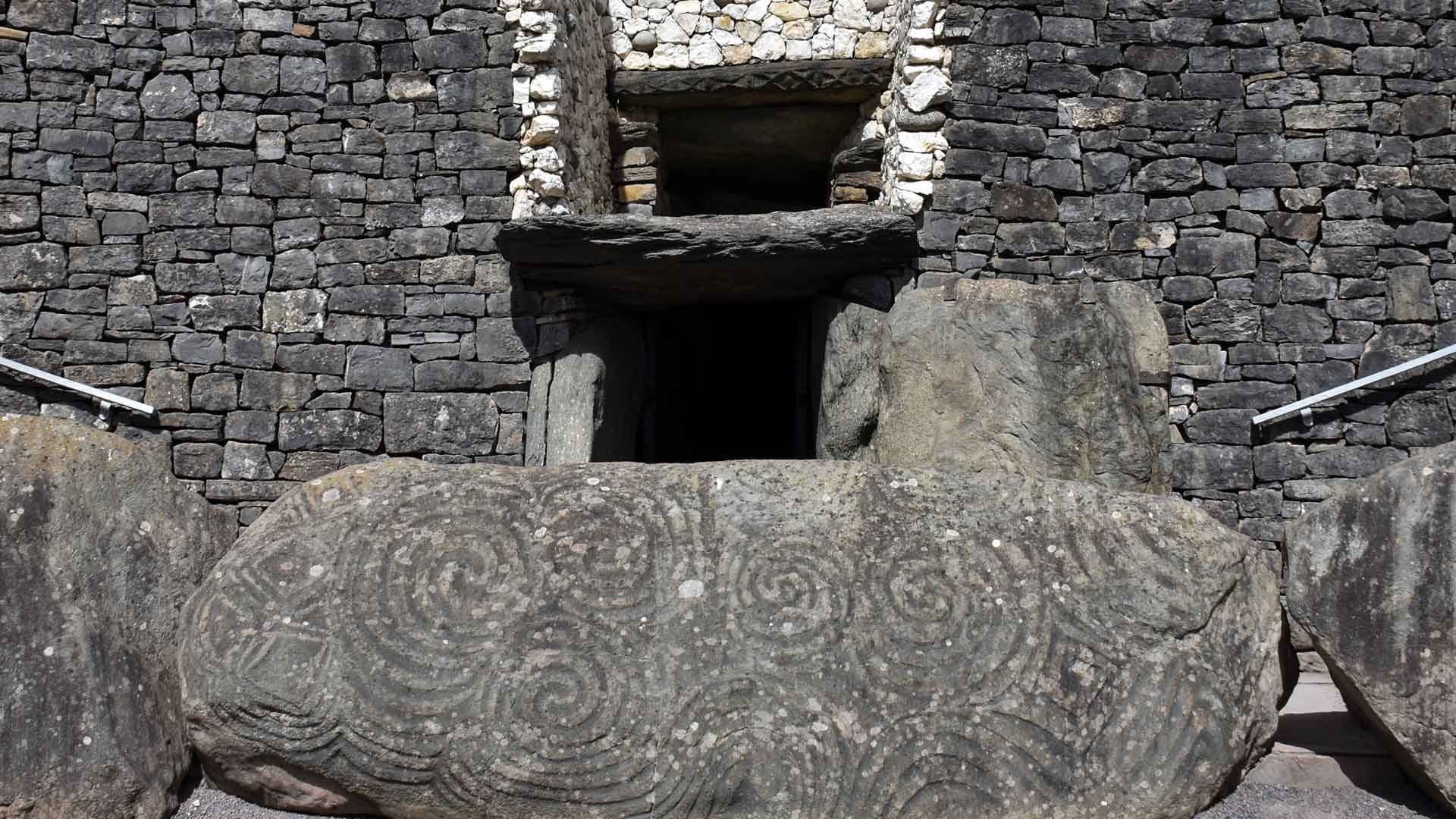
Passage Tombs
Probably the most well known of Irelands megalithic monuments are the Passage Tombs. These monuments typically consist of a large mound or cairn of stones with a passage leading from an outer entrance to a central chamber within; often with multiple recesses or galleries or leading off it.
Examples of passage tombs can be found all along the Atlantic seaboard, from north Africa to Scandinavia, however it is in Ireland that this monumental tradition achieved its greatest cultural expression.
Like most megalithic monuments, passage-tombs are associated with the Neolithic practice of ancestor worship, whereby the deceased members of a community had an essential role in spiritual life of the living. However, passage tombs brought this 'cult of ancestors' to a whole other level in terms of ritual complexity.
Although there are quite a few notable examples of single passage tombs In Ireland, most are found in large clusters or complexes. There are four main passage tomb Complexes: Carrowmore & Carrowkeel located in Co. Sligo, Loughcrew and the Boyne Valley complexes located in Co. Meath.
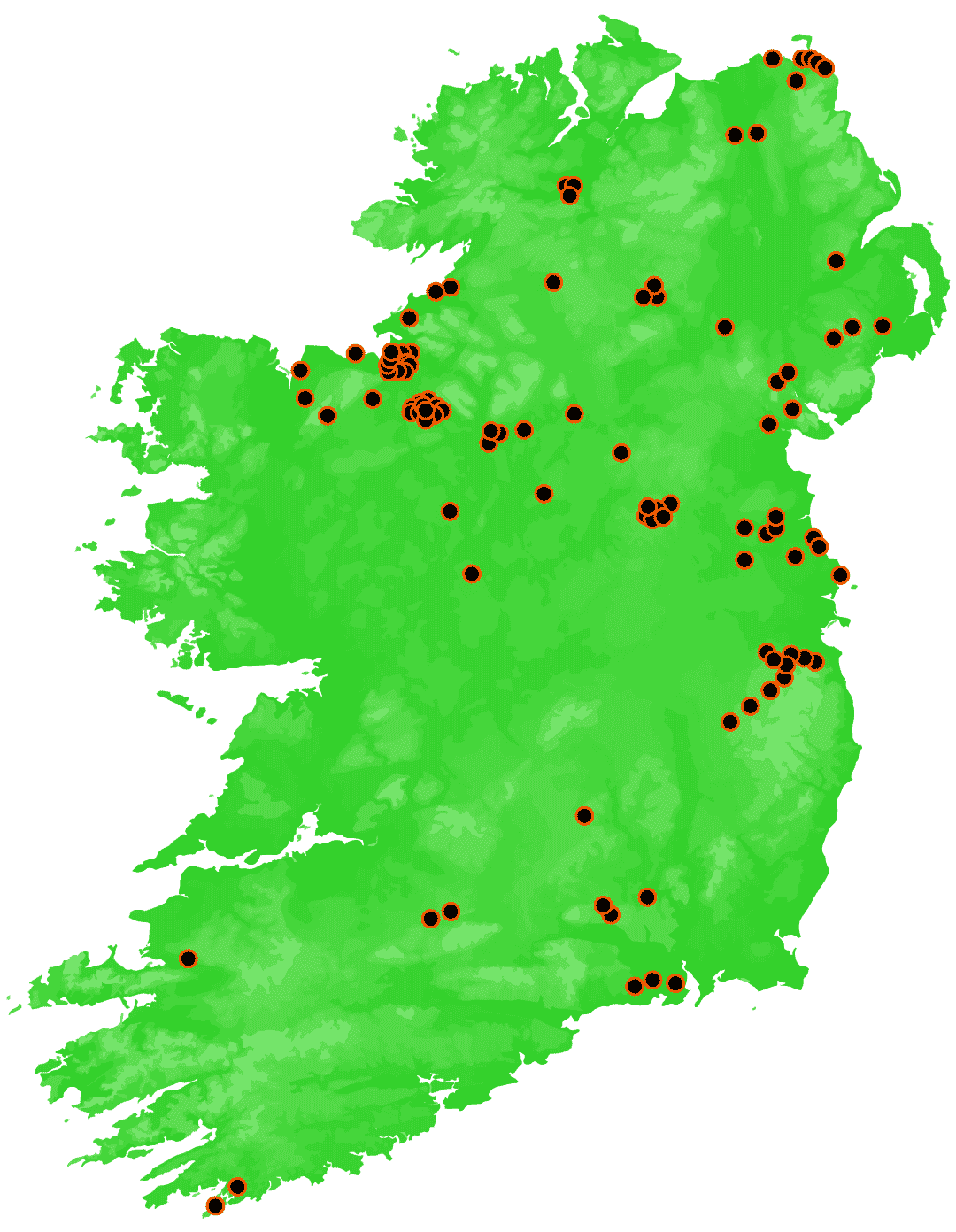
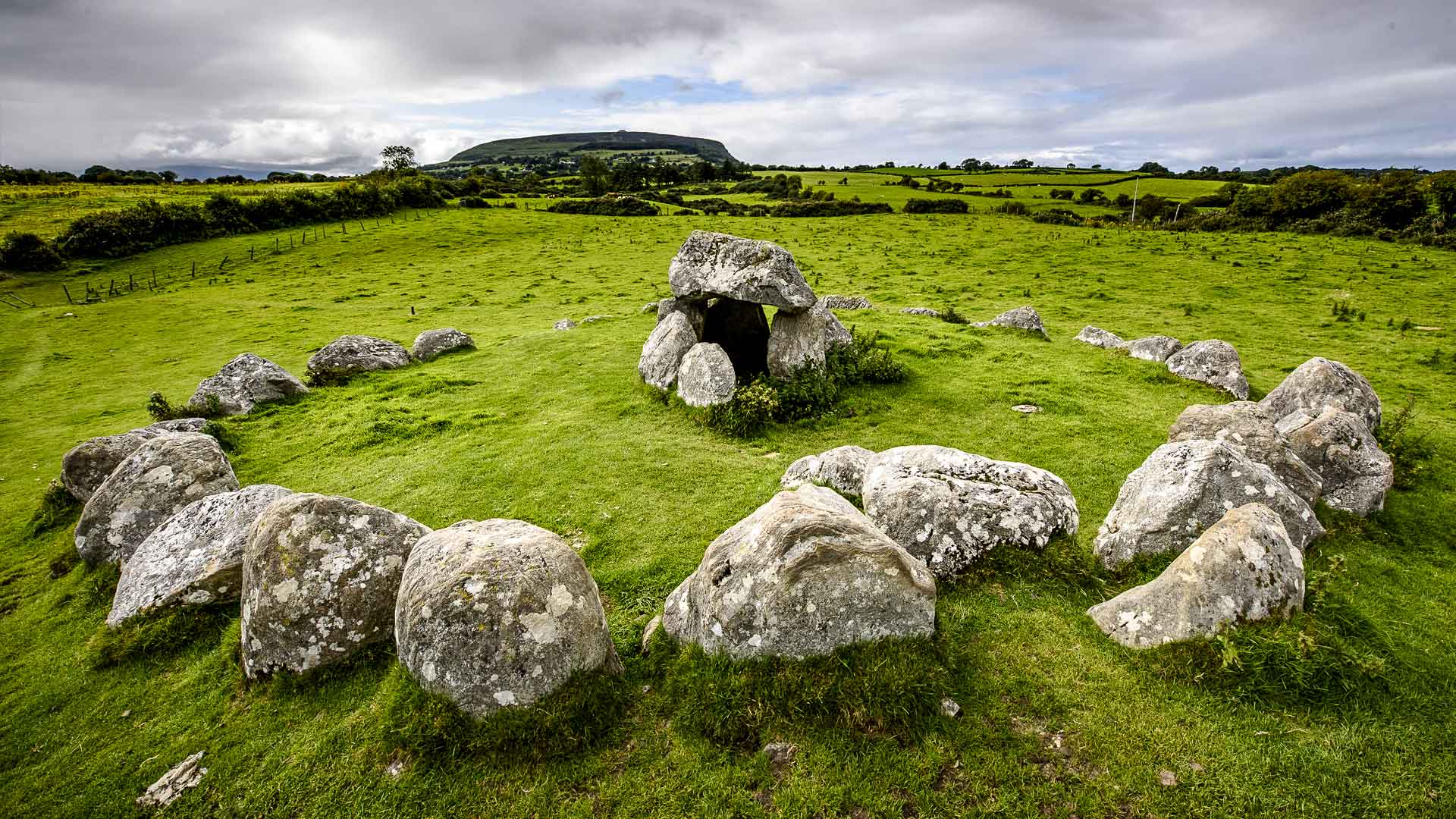
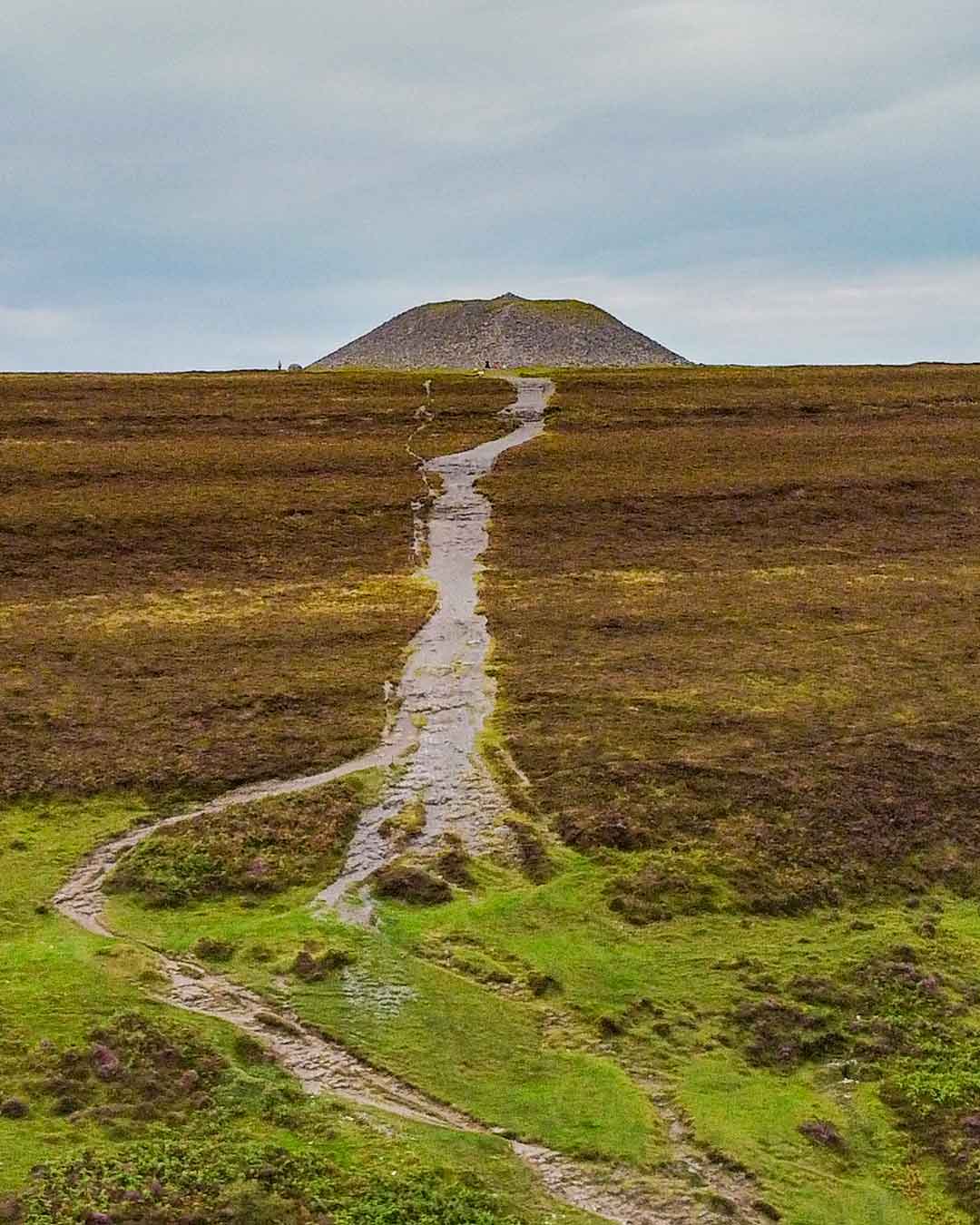
Originally it was thought that the passage tomb tradition arrived into the east of Ireland in the late Neolithic c.3000BCE, when it was already at its cultural zenith and slowly declined/deteriorated over time as it moved westwards. The most westerly examples of passage tombs, the simple dolmen/circles of Carrowmore, Co. Sligo were often considered to be the final degenerate monuments of a dying culture.
However, radio-carbon dating has now shown that the opposite is the case; that the tradition of passage tomb building actually began around Carrowmore (Co. Sligo) on the west coast of Ireland sometime after 4000 BCE and developed as it moved eastward; reaching its cultural peak with the great monuments of the Boyne Valley (Co. Meath) nearly a millennium later (c.3200 BCE)
As with the other megalithic monument types, the term ‘tomb’ can be a bit misleading as the remains of only a few, presumably high-status individuals were interred in passage tombs. However, recent genetic studies of remains from 3 out of the 4 passage tomb complexes (Carrowmore, Carrowkeel & the Boyne Valley ), have shown that those "high-status individuals" were in fact directly related to each other; indicating perhaps a familial line of royal, religious or socially elite personages being interred in these monuments for almost a millennium.
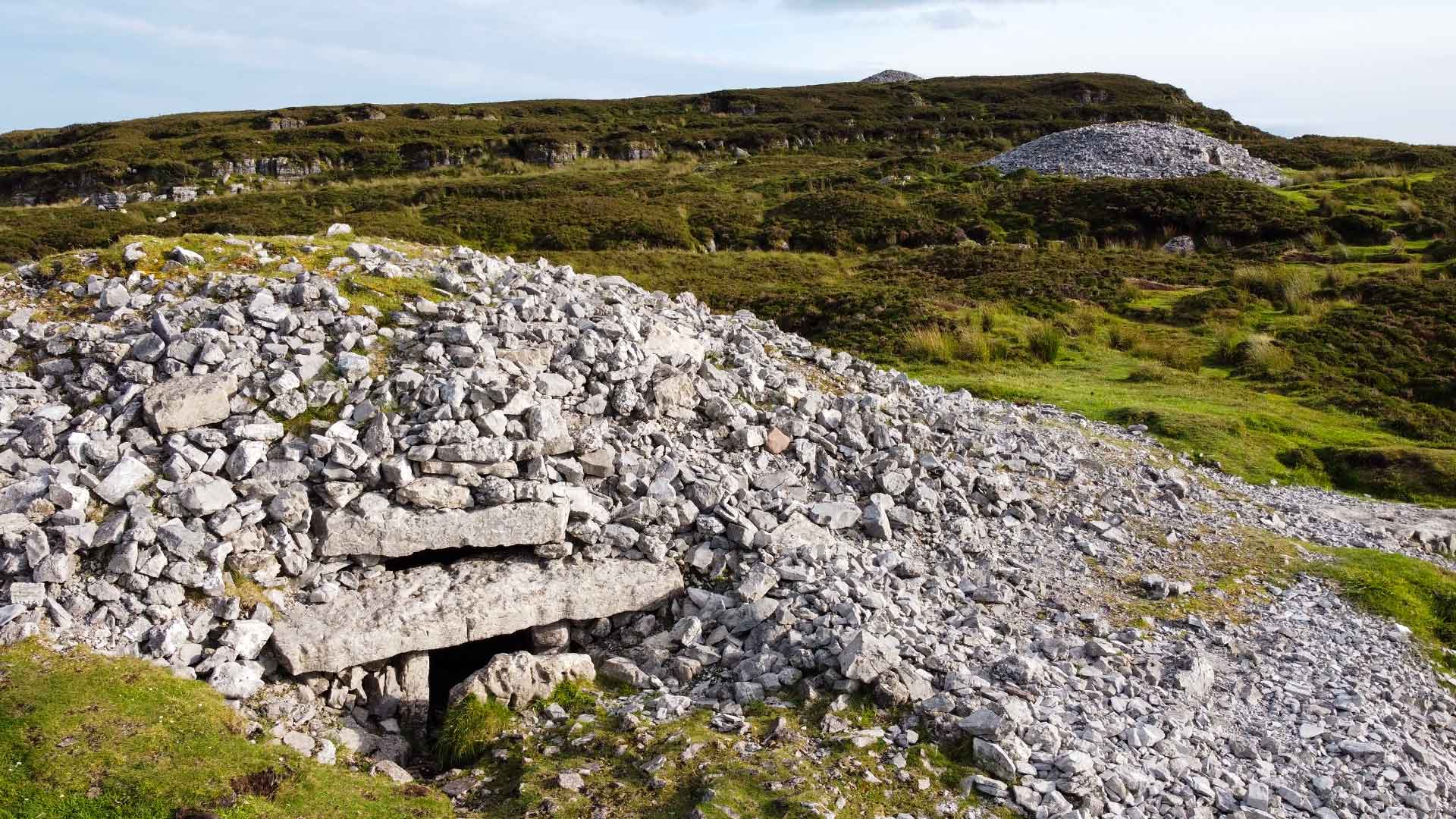
Over time as the culture developed, passage tombs would come to be built on a scale that would dwarf all other megalithic monuments. Along with just being repositories for the dead, passage-tombs acted as calendrical devices with many aligned to particular solar and lunar events.
Ireland also has the largest concentration of megalithic art in Europe and Irish passage tombs are the main repositories of that art. The Boyne Valley complex in Co. Meath, contains the largest collection of megalithic artwork with over 600 examples at the 3 main tombs: Newgrange, Knowth & Dowth.
Most of this artwork appears to be abstract in design; comprising of geometric motifs, including cup-marks, circles, chevrons, lozenges and of course multiple spirals. The most famous of which is the triple-spiral motif found within the main chamber of the Newgrange Passage Tomb.
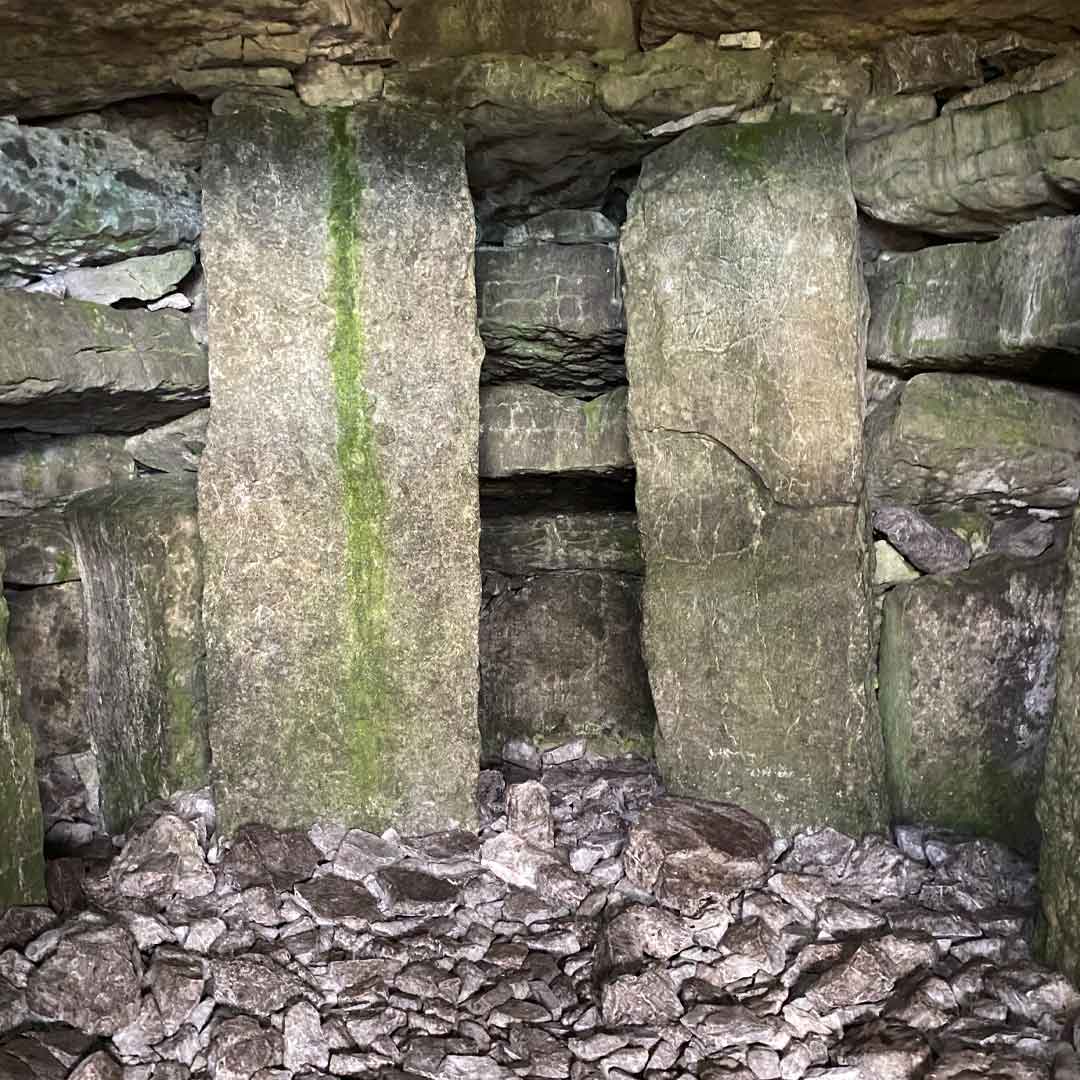
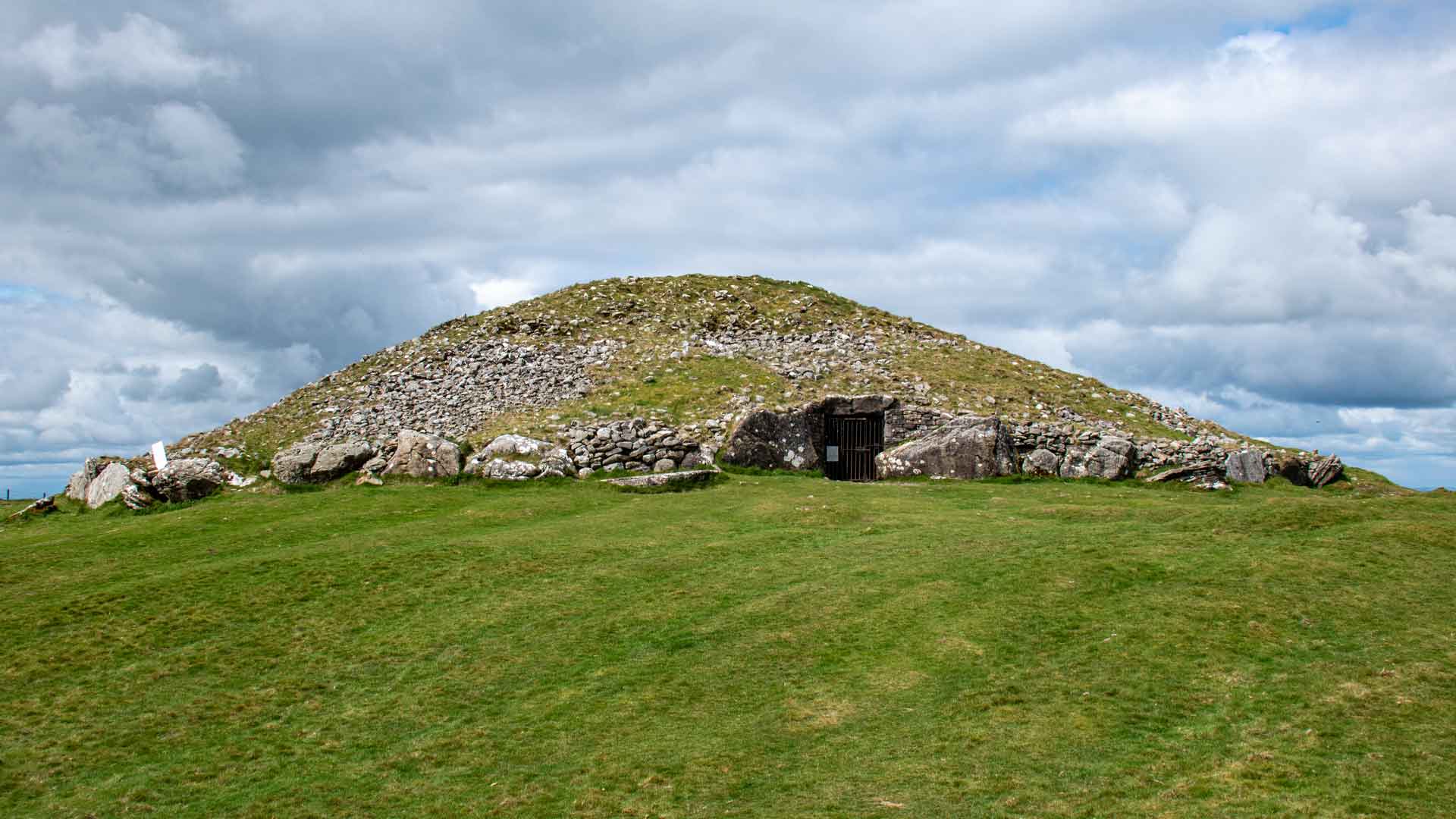
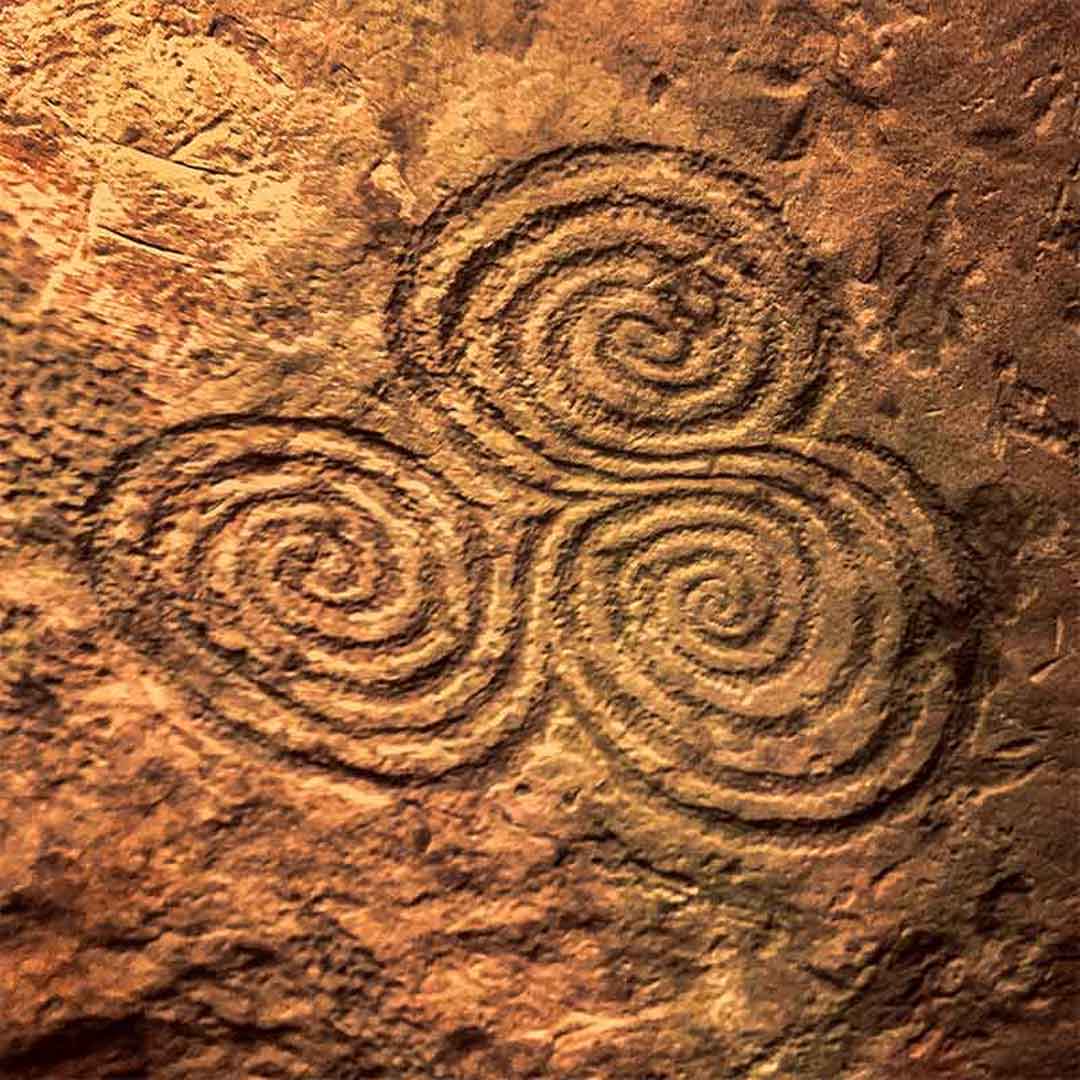
Newgrange is the largest and probably the best known passage-tomb in the world. Its construction around c.3200-3000BCE marks the high point of the tradition in Ireland in terms of scale & complexity. However, Newgrange also marks the demise of the culture as it is one of the last passage tombs and the last of the Irish megaliths to be built on such a monumental scale.
In fact megalithic construction in Ireland wouldn’t really begin again until the beginning of the Bronze Age (c.2500BCE).
Check out the examples of Passage Tombs below.
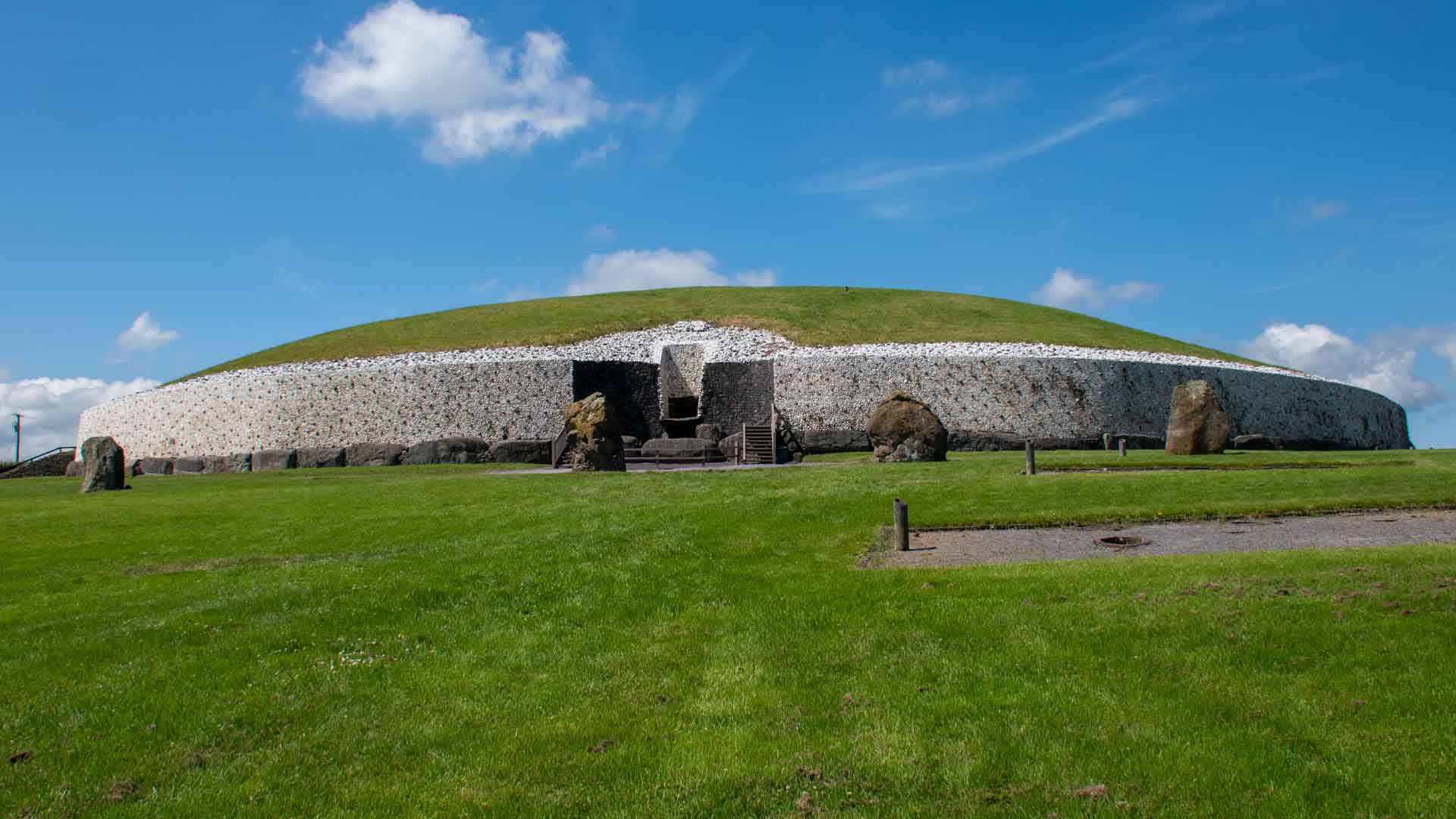
Passage Tomb Complexes
Single Passage Tombs

Passage Tombs
Probably the most well known of Irelands megalithic monuments are the Passage Tombs. These monuments typically consist of a large mound or cairn of stones with a passage leading from an outer entrance to a central chamber within; often with multiple recesses or galleries or leading off it.
Examples of passage tombs can be found all along the Atlantic seaboard, from north Africa to Scandinavia, however it is in Ireland that this monumental tradition achieved its greatest cultural expression.
Like most megalithic monuments, passage-tombs are associated with the Neolithic practice of ancestor worship, whereby the deceased members of a community had an essential role in spiritual life of the living. However, passage tombs brought this 'cult of ancestors' to a whole other level in terms of ritual complexity.
Although there are quite a few notable examples of single passage tombs In Ireland, most are found in large clusters or complexes. There are four main passage tomb Complexes: Carrowmore & Carrowkeel located in Co. Sligo, Loughcrew and the Boyne Valley complexes located in Co. Meath.



Originally it was thought that the passage tomb tradition arrived into the east of Ireland in the late Neolithic c.3000BCE, when it was already at its cultural zenith and slowly declined/deteriorated over time as it moved westwards. The most westerly examples of passage tombs, the simple dolmen/circles of Carrowmore, Co. Sligo were often considered to be the final degenerate monuments of a dying culture.
However, radio-carbon dating has now shown that the opposite is the case; that the tradition of passage tomb building actually began around Carrowmore (Co. Sligo) on the west coast of Ireland sometime after 4000 BCE and developed as it moved eastward; reaching its cultural peak with the great monuments of the Boyne Valley (Co. Meath) nearly a millennium later (c.3200 BCE)
As with the other megalithic monument types, the term ‘tomb’ can be a bit misleading as the remains of only a few, presumably high-status individuals were interred in passage tombs. However, recent genetic studies of remains from 3 out of the 4 passage tomb complexes (Carrowmore, Carrowkeel & the Boyne Valley ), have shown that those "high-status individuals" were in fact directly related to each other; indicating perhaps a familial line of royal, religious or socially elite personages being interred in these monuments for almost a millennium.

Over time as the culture developed, passage tombs would come to be built on a scale that would dwarf all other megalithic monuments. Along with just being repositories for the dead, passage-tombs acted as calendrical devices with many aligned to particular solar and lunar events.
Ireland also has the largest concentration of megalithic art in Europe and Irish passage tombs are the main repositories of that art. The Boyne Valley complex in Co. Meath, contains the largest collection of megalithic artwork with over 600 examples at the 3 main tombs: Newgrange, Knowth & Dowth.
Most of this artwork appears to be abstract in design; comprising of geometric motifs, including cup-marks, circles, chevrons, lozenges and of course multiple spirals. The most famous of which is the triple-spiral motif found within the main chamber of the Newgrange Passage Tomb.



Newgrange is the largest and probably the best known passage-tomb in the world. Its construction around c.3200-3000BCE marks the high point of the tradition in Ireland in terms of scale & complexity. However, Newgrange also marks the demise of the culture as it is one of the last passage tombs and the last of the Irish megaliths to be built on such a monumental scale.
In fact megalithic construction in Ireland wouldn’t really begin again until the beginning of the Bronze Age (c.2500BCE).
Check out the examples of Passage Tombs below or click here to view all

Passage Tomb Complexes
Single Passage Tombs

Passage Tombs
Probably the most well known of Irelands megalithic monuments are the Passage Tombs. These monuments typically consist of a large mound or cairn of stones with a passage leading from an outer entrance to a central chamber within; often with multiple recesses or galleries or leading off it.
Examples of passage tombs can be found all along the Atlantic seaboard, from north Africa to Scandinavia, however it is in Ireland that this monumental tradition achieved its greatest cultural expression.
Like most megalithic monuments, passage-tombs are associated with the Neolithic practice of ancestor worship, whereby the deceased members of a community had an essential role in spiritual life of the living. However, passage tombs brought this 'cult of ancestors' to a whole other level in terms of ritual complexity.
Although there are quite a few notable examples of single passage tombs In Ireland, most are found in large clusters or complexes. There are four main passage tomb Complexes: Carrowmore & Carrowkeel located in Co. Sligo, Loughcrew and the Boyne Valley complexes located in Co. Meath.


Originally it was thought that the passage tomb tradition arrived into the east of Ireland in the late Neolithic c.3000BCE, when it was already at its cultural zenith and slowly declined/deteriorated over time as it moved westwards. The most westerly examples of passage tombs, the simple dolmen/circles of Carrowmore, Co. Sligo were often considered to be the final degenerate monuments of a dying culture.
However, radio-carbon dating has now shown that the opposite is the case; that the tradition of passage tomb building actually began around Carrowmore (Co. Sligo) on the west coast of Ireland sometime after 4000 BCE and developed as it moved eastward; reaching its cultural peak with the great monuments of the Boyne Valley (Co. Meath) nearly a millennium later (c.3200 BCE)
As with the other megalithic monument types, the term ‘tomb’ can be a bit misleading as the remains of only a few, presumably high-status individuals were interred in passage tombs. However, recent genetic studies of remains from 3 out of the 4 passage tomb complexes (Carrowmore, Carrowkeel & the Boyne Valley ), have shown that those "high-status individuals" were in fact directly related to each other; indicating perhaps a familial line of royal, religious or socially elite personages being interred in these monuments for almost a millennium.


Over time as the culture developed, passage tombs would come to be built on a scale that would dwarf all other megalithic monuments. Along with just being repositories for the dead, passage-tombs acted as calendrical devices with many aligned to particular solar and lunar events.
Ireland also has the largest concentration of megalithic art in Europe and Irish passage tombs are the main repositories of that art. The Boyne Valley complex in Co. Meath, contains the largest collection of megalithic artwork with over 600 examples at the 3 main tombs: Newgrange, Knowth & Dowth.
Most of this artwork appears to be abstract in design; comprising of geometric motifs, including cup-marks, circles, chevrons, lozenges and of course multiple spirals. The most famous of which is the triple-spiral motif found within the main chamber of the Newgrange Passage Tomb.


Newgrange is the largest and probably the best known passage-tomb in the world. Its construction around c.3200-3000BCE marks the high point of the tradition in Ireland in terms of scale & complexity. However, Newgrange also marks the demise of the culture as it is one of the last passage tombs and the last of the Irish megaliths to be built on such a monumental scale.
In fact megalithic construction in Ireland wouldn’t really begin again until the beginning of the Bronze Age (c.2500BCE).
Check out the examples of Passage Tombs below or click here to view all



